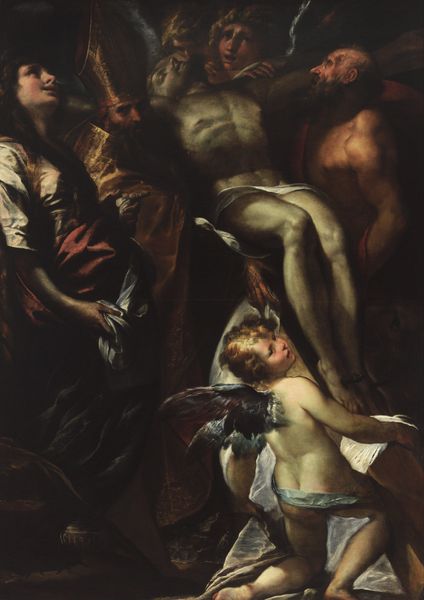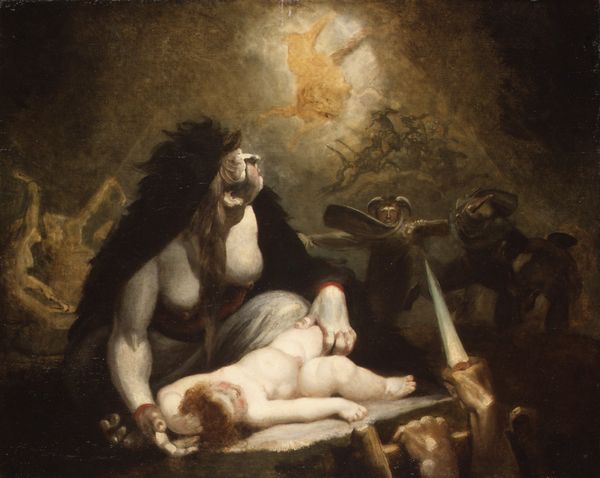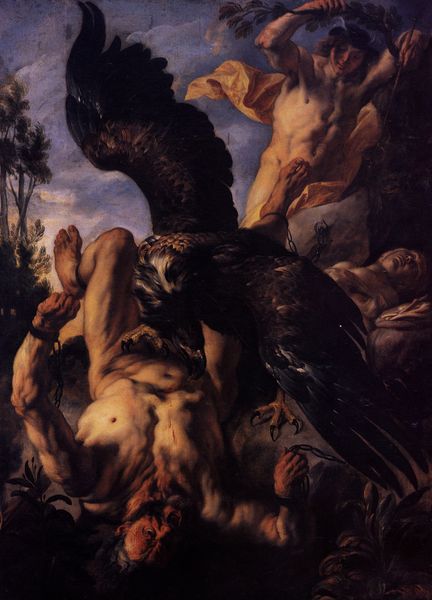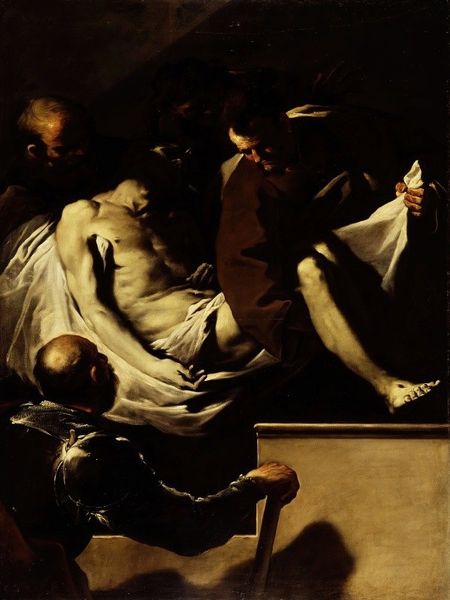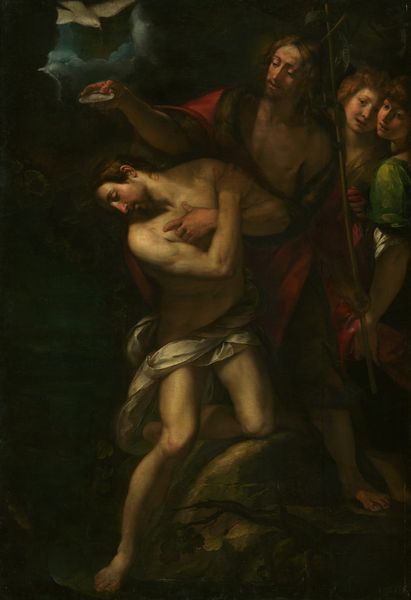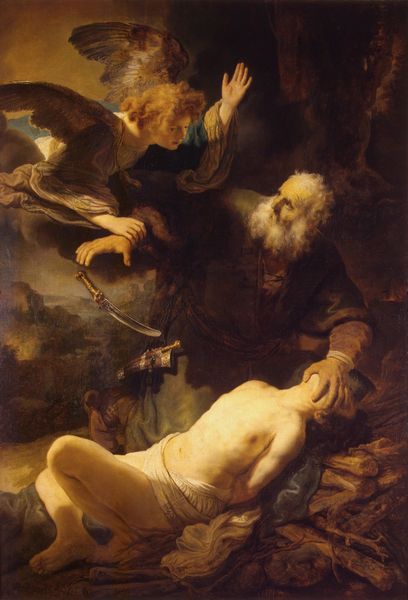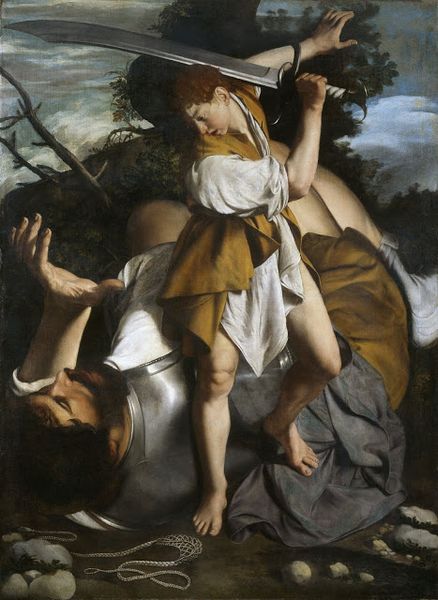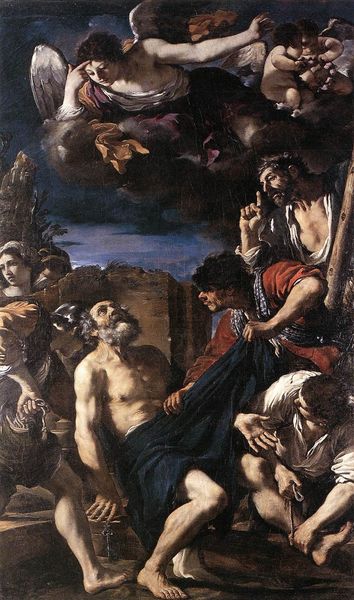
oil-paint
#
portrait
#
baroque
#
oil-paint
#
landscape
#
figuration
#
oil painting
#
christianity
#
history-painting
#
italian-renaissance
#
angel
#
christ
Dimensions: 369 x 215 cm
Copyright: Public domain
Curator: What strikes me immediately about Guido Reni's "Saint Roch," painted in 1617, is its stark contrast. The saint is cloaked in shadow, yet an angel appears, bathed in an ethereal glow. Editor: It’s interesting you point out the darkness. To me, the material deprivation is palpable. The frayed cloth, the rough-hewn stool – these speak of a specific type of suffering born from the era’s class disparities. Curator: Undoubtedly, but consider the composition. Reni masterfully employs chiaroscuro, enhancing the emotional weight. The divine light cast upon the angel seems to originate outside the pictorial space itself. Note, also, the symbolic wreath of flowers carried by the angel – its presence provides hope amid despair. Editor: Agreed. The materiality of that hope is also revealing. The wreaths made from readily-available blossoms by ordinary hands provide a counterpoint to the formal language used in the rendering of that angelic messenger. Are we looking at manufactured reverence versus spontaneous worship, I wonder? How might the historical production of wreaths for popular celebration influence the making of the painting? Curator: An interesting juxtaposition, given that Renaissance artists relied so heavily on material patronage and artistic legacy. However, consider how the painter subtly positions the dog, not to distract, but to amplify a somber atmosphere, yet providing a quiet warmth and tenderness at the lower corner, using muted hues that ground the composition and our eye within the scene. The visual poignancy of faith amidst suffering has a precise compositional architecture. Editor: I’d argue it reveals as much about lived circumstances as any carefully chosen visual language. Those broken chains on the floor also prompt me to ask: Were they crafted by a local smith? How does metalwork of the era influence our perceptions? Does such craftsmanship enhance our view of artistic rendering in "high art"? I can’t help but think the saint is weary and resigned. Curator: Yes, and by giving visual form to complex themes—disease, devotion, the celestial unknown—the artwork transcends its time. Reni elevates the Baroque style by engaging these deeply moving subjects, achieving a timeless, powerful statement on belief. Editor: Perhaps it speaks across time because it captures what so many could easily comprehend back then, and can still empathize with today: precarity. By drawing attention to its own making through form and material, this artwork enables an access to this view into another era and society.
Comments
No comments
Be the first to comment and join the conversation on the ultimate creative platform.
